If you’re a traveler in Georgia, there’s no way you’ll be able to visit the country without being offered a glass of Georgian wine (or the even stronger chacha, aka “Georgian tequila”) Georgia is the most ancient wine-making region in the world, the history of the country deeply intertwined with the production of grapes, the stories of the people of Georgia revealed in every sip of a glass of Saperavi.
Wine-making is a year-round practice, but autumn is a special season. As the leaves begin to change in the high Caucasus, the vines in the Kakheti Wine Region hang heavy with red-tipped Rkatsiteli grapes, ready to be harvested and turned into wine. This period of harvest is also a period of celebration, a festival lasting throughout the season and known as Rtveli.
During this period, families and friends gather together to harvest the grapes, support in the production of wine, and celebrate the bounty of the harvest with a supra, or a large Georgian-style banquet. While wine is enjoyed across the country – from the streets of Tbilisi to the banks of Batumi – the birthplace of this tradition is in the Kakheti Wine Region itself.
I spent two days participating in Rtveli with families in the Kakheti Wine Region in September and managed to emerge with my liver still intact. I found that Rtveli is an embodiment of Georgian hospitality — an excitement to welcome all, friends and strangers, to share in laughter, music, and of course, wine.
Stay tuned to the end of this article for a special video about my Rtveli experience, or check out my full 2-week guide to Georgia here.
This site uses affiliate links to share products that I use and love! If you click on one of the links I may receive a small commission at no additional cost to you. This helps keep my site up and running — thank you!

What is Rtveli?
The name Rtveli originates from the Georgian word for fruit harvest, “stveli.” Somewhere along the line, the S was replaced with an R to specifically refer to the grape harvest, and Georgians have been celebrating ever since.
Rtveli does not look one way for everyone, nor is it a one-and-done kind of festival that occurs on a certain day. Rather, Rtveli is a period of festivity that looks different for each family, celebrated throughout the autumn harvest season. Rtveli celebrations see friends and family come together from around the region to harvest the grapes, make the wine, and celebrate the bounty with feasting, dancing, and music. These celebrations can occur weekly, nightly, or even multiple times daily throughout the harvest season.
While Rtveli celebrations differ, there are many elements that characterize the the festivities. The gatherings begin with a harvest — plucking the grapes from the vines and filling buckets to the brim with the colorful fruit. Next, the grapes are turned into wine, traditionally pressed by feet in a large trough called a satsnikheli. Finally, family and friends gather together to enjoy wine over a supra. The elected tamada, or toast-master, leads the group in a series of toasts, bridging the gap between past, present, and future by inviting guests to celebrate the stories and legacy of the wine while also sharing their future wishes with those around the table. Every Georgian supra, regardless of size or celebration, has a tamada, but during Rtveli, the role takes on an especially significant meaning as families welcome loved ones and strangers alike to join them at the table.
Traditional Georgian folk music accompanies each stage of the Rtveli celebrations, the themes of many songs telling the stories of the Georgian people, the melodies weaving their way into the bouquet of the wines.

How You Can Celebrate Rtveli in Georgia
Even as a visitor in Georgia, there are plenty of opportunities to participate in Rtveli harvest celebrations. Rtveli usually occurs from late August to mid October in the eastern Kakheti Wine Region, but cooler western regions will see the celebrations run until early November. To ensure you’ll be able to participate in Rtveli, I’d recommend planning a September visit to the Kakheti Region.
In this article, I share my experiences at two different wine cellars in Kakheti that invite guests to join them for Rtveli celebrations. You can also join one of the following highly rated tours to participate in elements of rtveli while also experiencing the best of the Kakheti Wine Region.
🍷 Kakheti Day Tour with Wine Tastings: Sample 7 types of Georgian wine on this day tour
⛪️ Full-Day Kakheti & Sighnaghi Tour: Visit monasteries and sample wine in the Kakheti Region
🍗 Full-Day Tour with Lunch: Visit a number of vineyards and participate in a Georgian supra!
Celebrating Rtveli at Wine Yard N1
WINE YARD N1
Location: Akhalsopeli, Georgia | View on Map
Participate in Rtveli: Get in touch on their Facebook Page or reach out on Whatsapp at +995 577 11 06 52

From the outside, Wine Yard N1 looks like many other houses in the small town of Akhalsopeli. The stucco house hangs with vines of green rkatsiteli grapes, the Caucasus Mountains seemingly extend from the backyard. However, upon entering the property, you immediately know you’re somewhere special. Large clay qvevris rest among delicate dandelions in the yard, a wooden satsnikheli sits at the end of the stone drive, and Tika Dugashvili is there, glass of wine in hand, to welcome you to her home.
A Family Wine Making History
Wine Yard N1 is not only a wine cellar, but a living embodiment of Georgian history.
Tika Dugashvili, the founder and owner of Wine Yard N1, drew inspiration for the business from a man she knew well — her grandfather. A true Kakhetian wine-maker, Tika recalls her grandfather sharing a deep love for Georgian wine-making tradition and witnessing the ways in which it shaped his life and his community. With the establishment of Wine Yard N1 in 2018, Tika aimed to keep those traditions alive and invite people from around the world to learn and experience the ancient practices that not only shaped the country, but characterize her family history.
These days, Wine Yard N1 produces their own label of wines on an international scale. Besides wine, the cellar also produces their own chacha and jams, all made on-site with locally grown grapes and ingredients. However, Wine Yard N1 is unique in that it invites guests to be a part of the wine-making process, introducing them to unique Georgian wine-making methods year-round and welcoming them during the harvest season to be a part of rtveli celebrations.

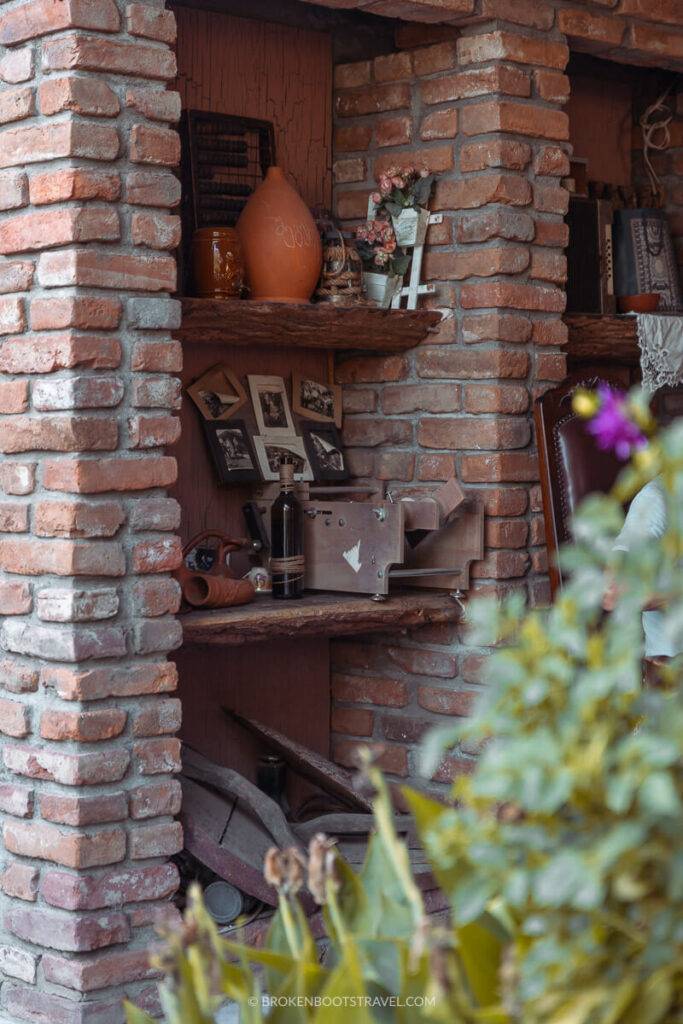
Woman-Led, Woman-Operated
Traditionally, the rtveli harvest was a man’s job, with women taking on the roles of preparing the supra and arranging the home for guests. At Wine Yard N1 Tika turns this idea on it’s head, celebrating Georgian wine-making tradition while also moving into the 21st century with a fully woman-led, woman-operated business. With Tika at the head, Wine Yard N1 is completely family-operated, with Tika and her sisters producing the wine, preparing the supras, and running the business at an international scale.
The world has taken notice of Tika’s drive and innovation. Since it’s establishment in 2018, Wine Yard N1 has been the recipient of numerous awards and the brand has gained recognition worldwide. Wine Yard N1 was the recipient of the 2018 Welcome to Georgia Woman Entrepreneur in the Tourism Industry Award as well as the 2019 Best Rural Tourism Award, and is a part of the UN Global Compact with a dedication to corporate sustainability.

Traditional Georgian Wine-Making Methods
Wine at Wine Yard N1 is produced with traditional Georgian wine-making methods. First, grapes are picked from the vines lining the back of the property. The grapes are then crushed to extract the juice. Wine Yard N1 invites guests to do this in the traditional way by foot in the satsnikheli, a large trough made out of a hollowed out tree. However, like many modern-day wine yards, for production of their commercial wine grapes are crushed in a machine.
Once the grapes are crushed they are added seeds, stems, and all to large clay vessels called qvevris. Qvevris are a unique and ancient Georgian wine-making tradition. These large earthenware vessels are constructed by hand, then buried deep in the ground of Georgian wine cellars. The crushed grapes are added to the vessels then sealed to ferment, usually for around 5-6 months depending on the intended product. During this period of time, the vessels are occasionally opened to be stirred with a long, pronged stick, thoroughly dispersing the flavors and aiding the fermentation process.
When the wine is ready, it is ladled out of the qvevri using a long-handled gourd called an orshimo. Here at Wine Yard N1, wine is served in the traditional way, drunk from clay bowls called pialas.



Supra and Celebration
With the wine prepared, it is time for a supra, or a Georgian banquet. In keeping with Georgian tradition, supra at Wine Yard N1 is packed with Georgian specialties. Tika and her sisters busily keep the table loaded with Georgian cuisines and the wine never stops flowing. Some of the plates include kachapuri – Georgian bread stuffed with cheese, nigvziani badrijani – fried eggplant stuffed with walnut and garlic paste, and the always refreshing tomato and cucumber salad, the flavors brought together by the tangy vinegar and kick of cayenne.
Behind the house, dried grape vines are assembled in a pit and lit in preparation for the barbecue. Georgian barbecue is known as mtsvadi, typically made with marbled pork shoulder grilled kebab style in a traditional outdoor Kakhetian kitchen. The final product is juicy, crispy, and delectable, and is often served with crunchy raw onions and a dash of sour pomegranate juice.

Stuffed with Georgian food and filled with Georgian wine, celebrations continued long into the night with dancing, singing, and merriment. Tika welcomes groups and families from all around the world to Wine Yard N1, and on this particular evening, we were lucky to be joined by a lively group of Latvian students who shared their energy and extraordinary dance moves. Perhaps not the most traditional of Georgian dances, but a joyous evening of celebration and connection around the world.

I want to say a special thank you to Tika and her family for welcoming me at Wine Yard N1 and for sharing their story and history with me. I encourage all of you to pay Wine Yard N1 a visit if you’re in the Kakheti Wine Region — you will be welcomed with open arms and the best glass of saperavi around!
Celebrating Rtveli at Keti’s House
KETI’S HOUSE GUESTHOUSE
Location: Shilda, Georgia | View on Map
Participate in Rtveli: Get in touch on their Facebook Page
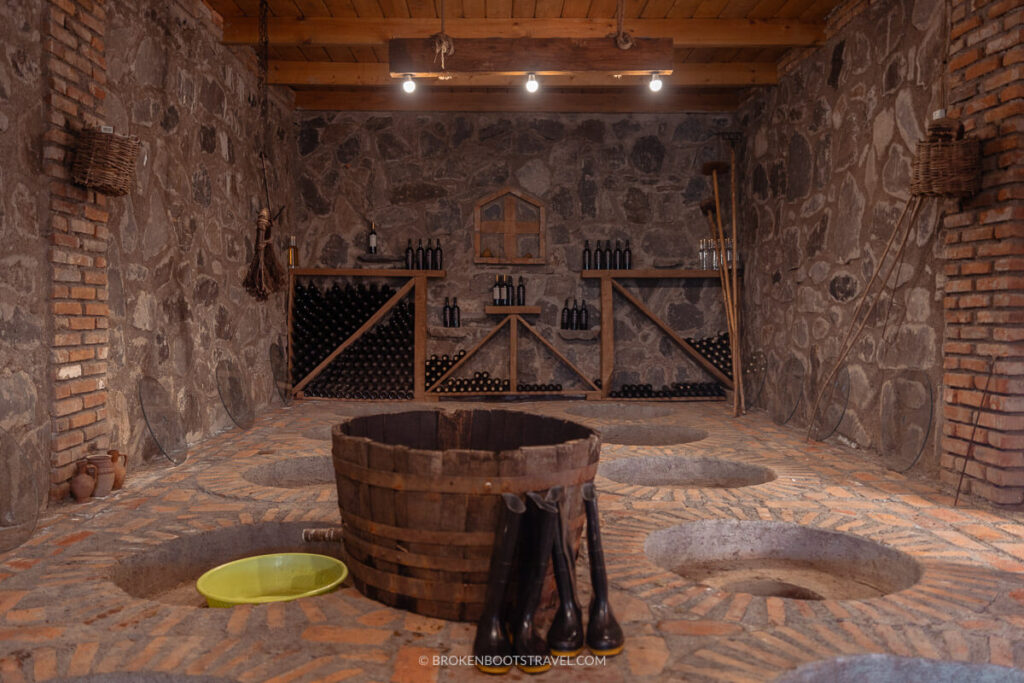
Music radiates from the Keti’s House Guesthouse in Shilda, Georgia. In the yard, Bachana strums his panduri, the sound carrying on the slight breeze passing through the town. Steps away, Shota sings as he cleans a qvevri with a cherry-bark brush, his voice echoing through the clay vessel and joining with the sounds of the strings and the wind. For this family behind Keti’s House, the second stop on my rtveli journey, music is as much a part of rtveli as the harvest.
Rtveli and Georgian Folk Music
Georgian folk music is world renowned and holds deep significance as a form of storytelling throughout the country. In the Kakheti Wine Region, traditional music has an especially important place in the form of table songs. Like their name implies, these songs are usually sung around a table in the form of ritualized toasts and are usually polyphonic — featuring a sustained sung base tone with two or more voices singing unique parts in harmony.
As rtveli brings friends and family together around a table, certain songs are an integral part of the celebrations. Music is made for every step of the harvest process, usually culminating in the singing of Mravalzhamieri around a supra. Mravalzhamieri is only sung in regions where grapes are grown, it’s name translating to “May You Live a Long Life.” Sung together during rtveli, the song celebrates the gathering of loved ones together and wishes blessings and peace upon those present.
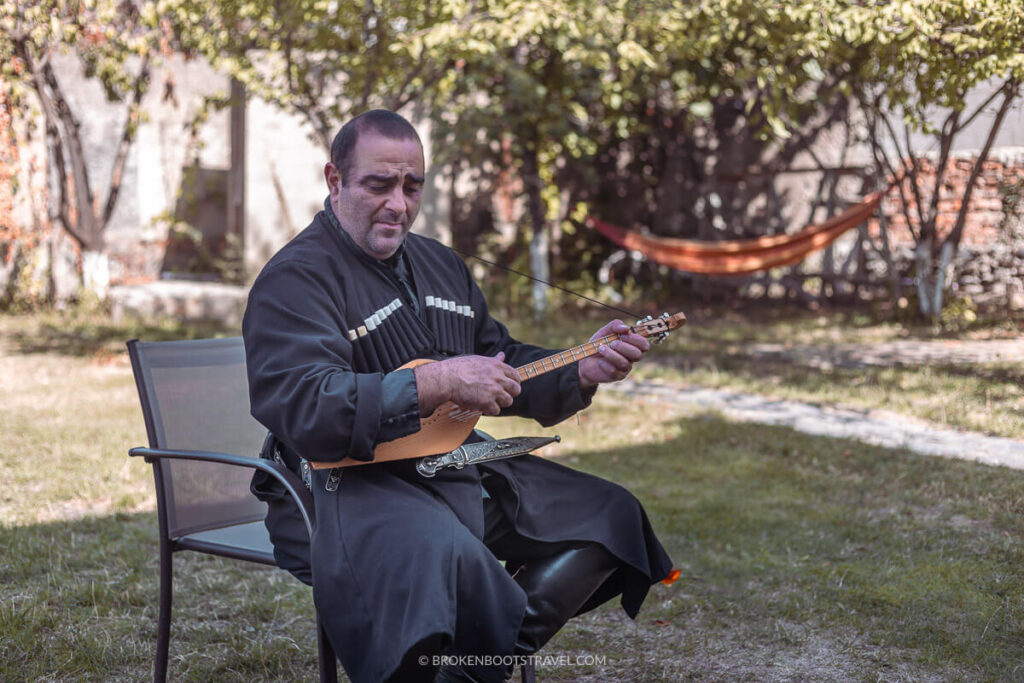
Making Churchkhela – The “Georgian Snickers”
Keti’s House invites visitors from around the world to participate in rtveli celebrations, but is also a guesthouse aimed at giving visitors a real look into the lives of a Kakhetian family. Owned and operated by Keti Samkharadze and her husband Bachana Kakonashili, the guesthouse offers a unique homestay experience, complete with opportunities to learn to make traditional Georgian dishes.
I had the opportunity to make Churchkhela with Keti and her family while visiting Keti’s House. The treat is everywhere in Georgia — it’s not uncommon to see the colorful candy hanging by the bunch at local markets and roadside stalls. Though this treat is enjoyed year-round, it’s popularity unofficially awarding it the nickname of the “Georgian Snickers,” it is typically produced in the masses during the rtveli harvest when the grapes are freshly-picked and abundant.
Churchkhela is made from a strand of nuts, usually walnuts or hazelnuts, coated in a thickened grape juice paste. First, nuts are strung together using a needle and thread. With the strands complete, the sauce is made by combining a mixture of grape juice and flour, heated on the stove until it reaches a thick consistency. Finally, the strands of nuts are fully coated in the sweet sauce, then hung outside in the sunshine to cure. The curing process can vary, but generally takes upward of a few months, making Churchkhela a popular Christmas treat.
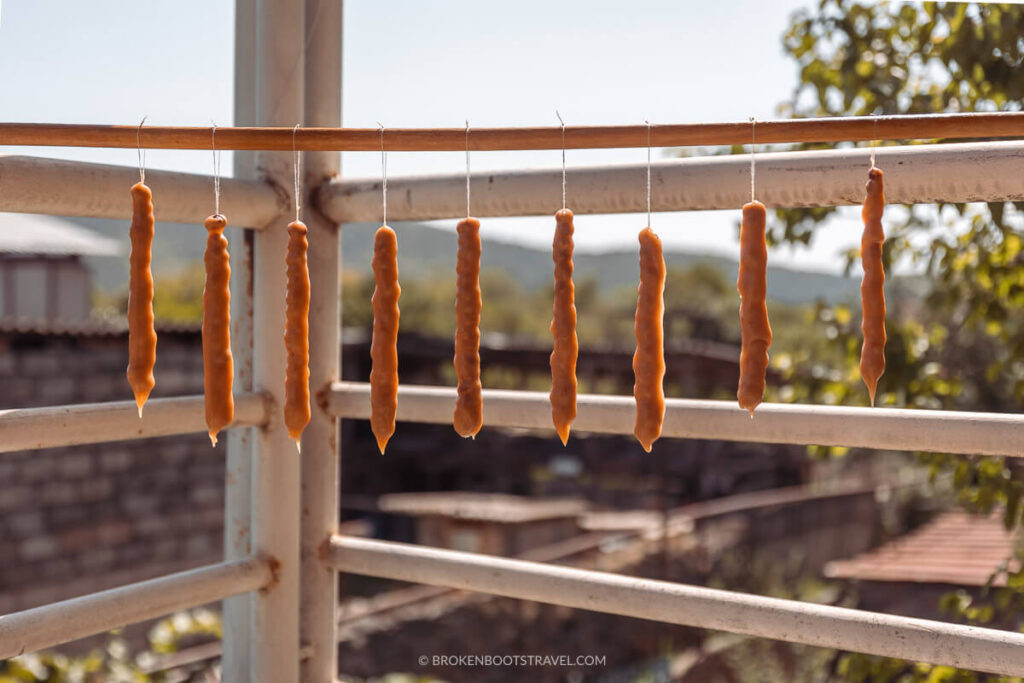
Making Wine with Our Feet at Shaverge Wine Cellar
In the evening, we traveled to the neighboring Shaverge Wine Cellar for a rtveli harvest and celebration. This vineyard grows a large variety of native grapes, from the indigo, almost savory Adesa grapes to the ovular-shaped and properly named Ladyfinger variety. Many grapes native to Georgia were lost during the years of Soviet occupation in favor of varieties easier to grow, but at Shaverge, special attention is paid to the harvest of uniquely Georgian strains.
After harvesting the grapes, we bring them back to the wine cellar to be pressed. The grapes are added to a large trough, rubber boots are donned, and before long music is playing while we happily smash the grapes with our feet. The traditional method of foot pressing developed as a way to extract the juice without bursting the seeds — as it turns out, feet apply just the right amount of pressure to be the perfect wine-making machine. While we crush the grapes, Keti and Bachana sing Mravaljamieri, a song traditionally reserved for the grape-stomping.

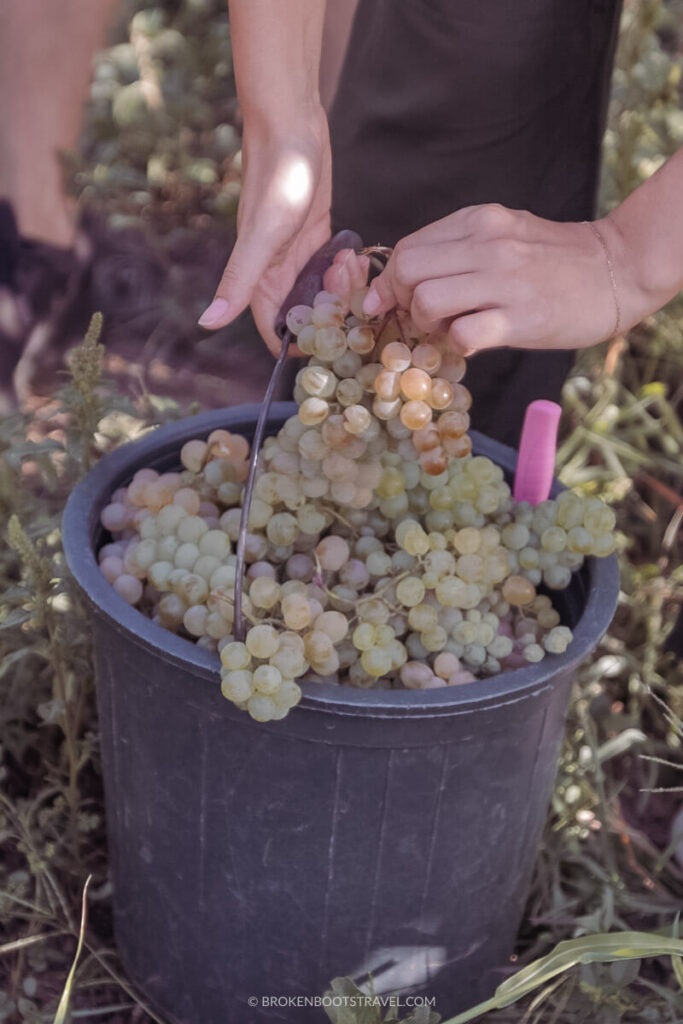
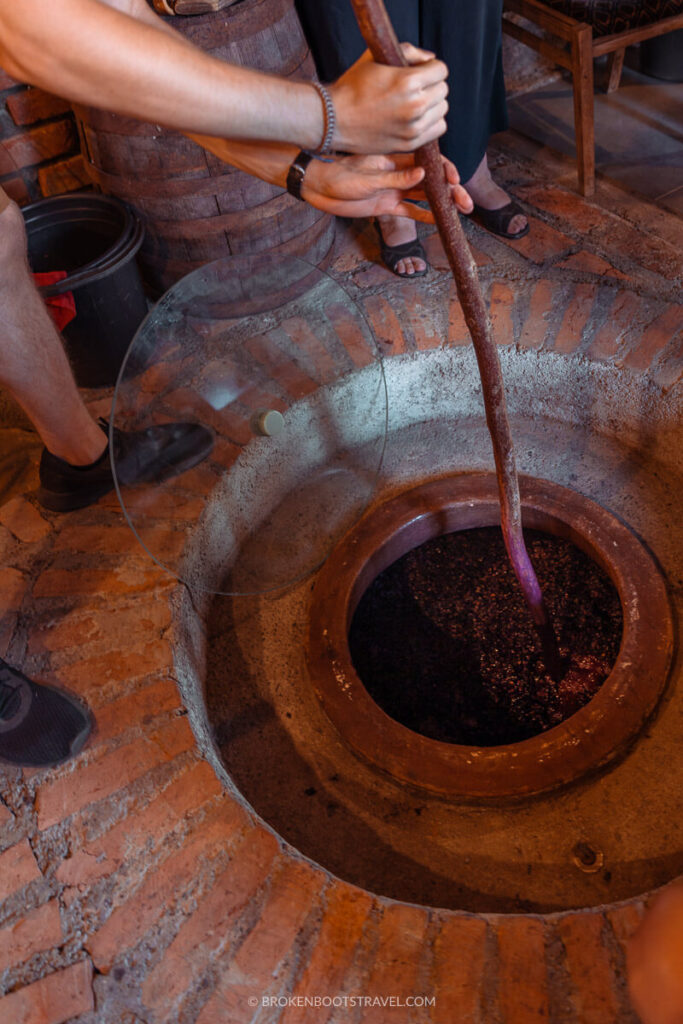
Celebrating with Georgian Folk Dance
Where there is music there is dance, and this is never more true than during a supra.
As the feasting begins, Keti sits down at the piano and begins to play a tune. Before long, her brother Shota has joined her, singing in harmony before beginning to dance. He moves his left arm upwards, turning his palm before repeating the movement on the other side in a move very traditional of a Karachokheli dance. This dance emerged from the craftsmen of Georgia, known for their carefree life and a love of Georgian wine.
Georgia is home to numerous traditional dances, many stemming back to the Middle Ages. Like folk music, folk dance in Georgia acts as a form of storytelling, revealing the history of the country through movement. During rtveli, dance is commonly a part of the celebrations to celebrate the bounty and beauty of the region.
Check out this article to find the best places to view traditional dance in Tbilisi, Georgia’s capital city.
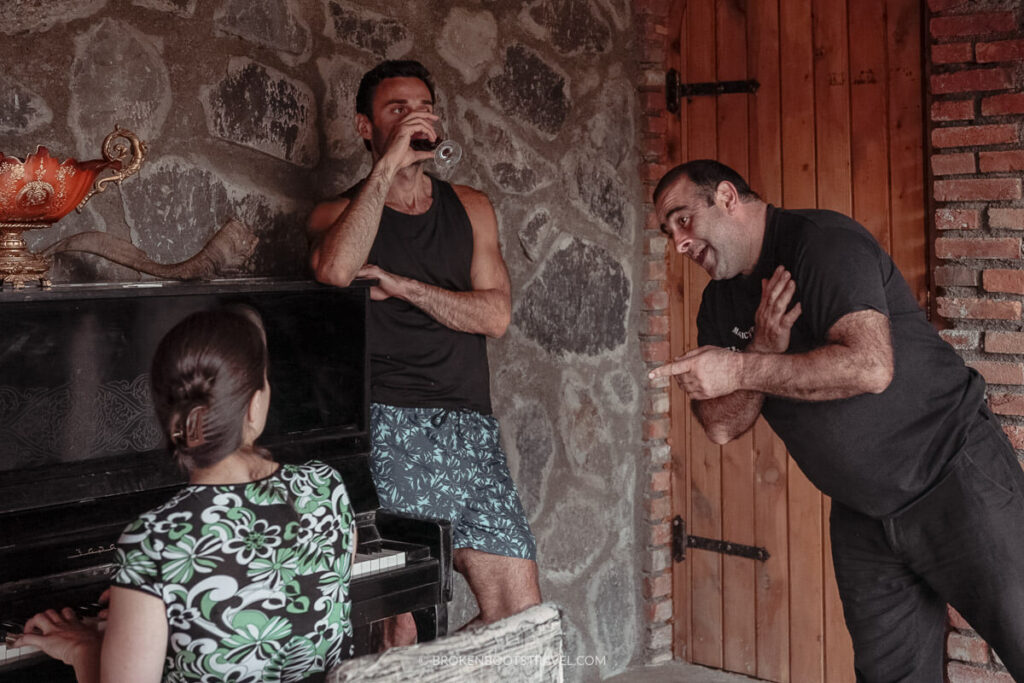
Many thanks to Keti and Bachana for welcoming me into their home and for sharing the beautiful music and dance of Georgia with me. If you’re interested in visiting the Kakheti Region I highly recommend a stay at Keti’s House for a taste of the real Georgia.
Where to Stay for Rtveli Celebrations
The best place to stay to celebrate Rtveli in Georgia is in the Kakheti Wine Region itself.
The largest town in the region is called Telavi, a small city at the foothills of the mountains. I stayed on the outskirts of town at Guesthouse Lilia, a cozy, family run guesthouse with its very own wine cellar in the backyard! I highly recommend them – the property is walking distance from a number of things to see in Telavi, not to mention Lilia made me fresh mint tea every morning.
The one downside to staying in Telavi is that it’s about an hour from the wine yards mentioned above, but it’s easy to get around with the help of a driver. Lilia was kind enough to connect me with a local friend who drove me around the region and waited for me at each stop. I recommend asking your hotel or guesthouse owner about local drivers in the area.
Of course, if you want to stay closer to both wine yards, the most central point would be the town of Kvareli. There are a number of lodging options available in Kvareli, or you could opt to stay right in the middle of the action at Keti’s House itself!
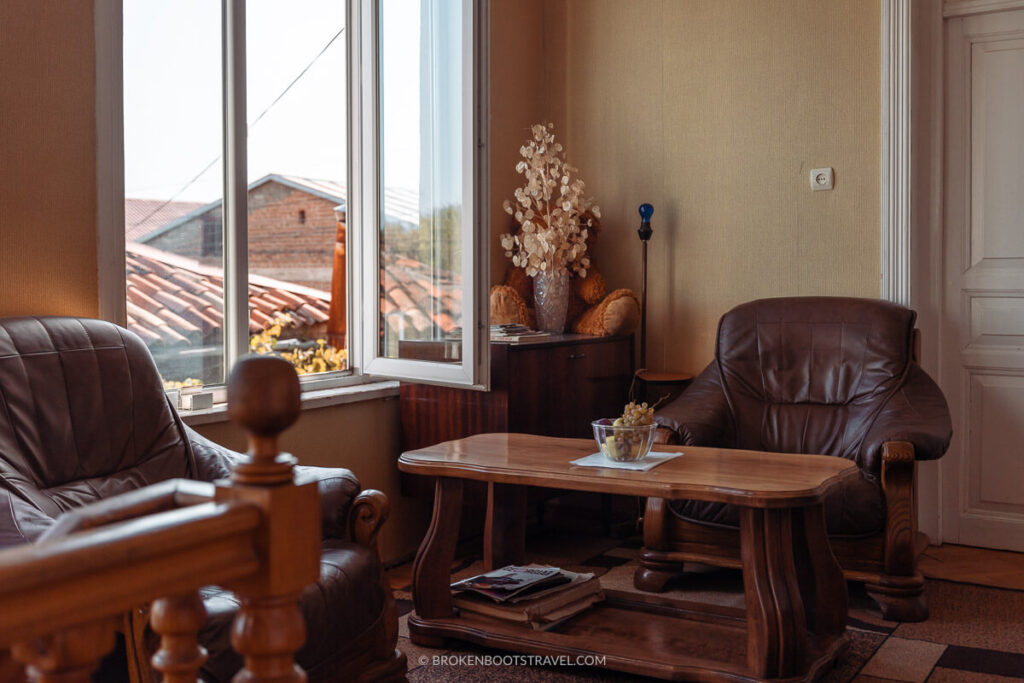
Why You Should Visit Georgia During Rtveli
There is no better place to experience Georgian culture than around a supra with a glass of qvevri wine. Georgian culture is warm and welcoming, and I found people eager and excited to share these beautiful traditions with visitors from around the world.
Rtveli harvest season in Georgia is a time of celebration and the whole country feels full of joy. Autumn in the Kakheti region is especially beautiful, with the leaves beginning to turn and long, cool days full of sunshine. There’s nothing like enjoying a glass of wine with the feel of the sun on your skin.
All I’m saying is, if you have the chance to visit, take it. My time spent amongst the grapes and stories and music of the Kakheti Wine Region will stay with me forever.
VIDEO: Celebrating Rtveli in Kakheti, Georgia


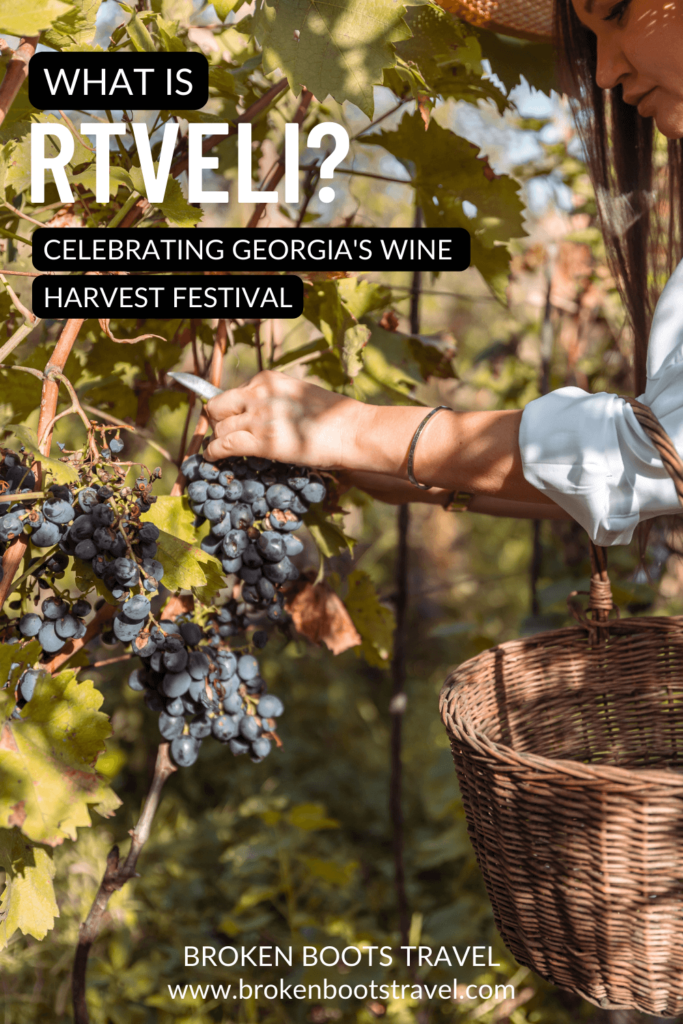
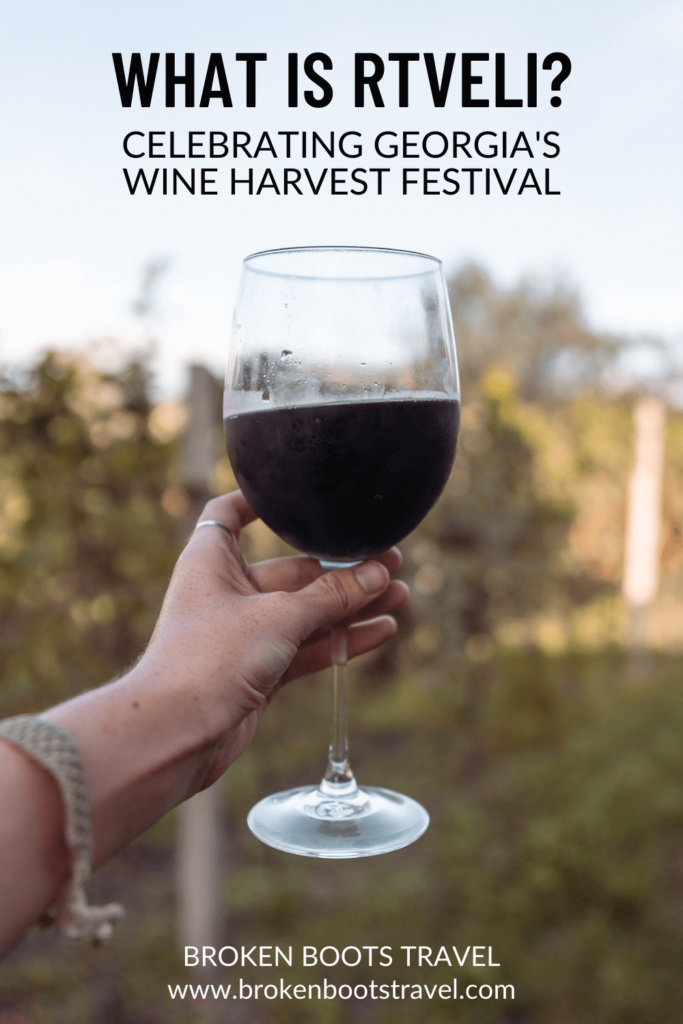
Love stories? Subscribe to my newsletter to get my latest updates delivered straight to your inbox every month. One email a month + no spam? Sign me up!
Virginia Taylor (Ginna) is a travel writer and photographer exploring the world until her boots wear through. She’s currently on a mission to explore all 32 departments of Colombia, though she formerly called the Middle East home. Want to know more? Visit the About Page.
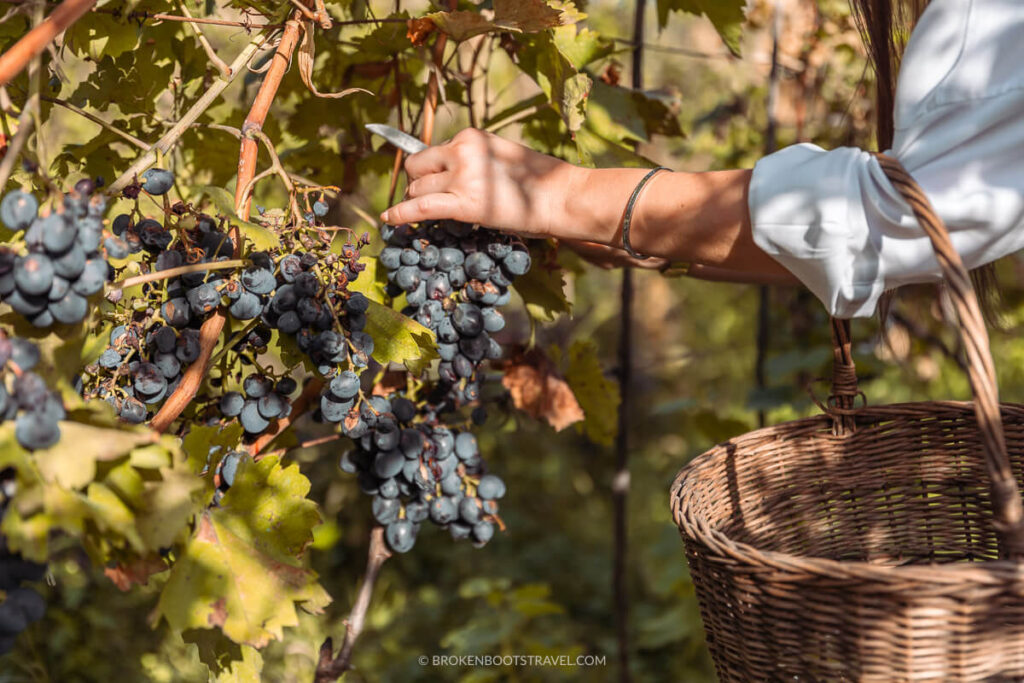
This sounds like such a fun festival! The Georgian snickers sound like an interesting snack – not sure I’d like it, but I would try it haha! I’ve always wanted to go grape stomping too!
Grape stomping was one of my favorite parts! I’d definitely say Churchkhela was interesting haha! In some of the market stalls in Tbilisi I saw it made with all kinds of outer coatings, and sometimes the inside was made of dried plums instead of nuts. Sweet and delicious any way!
Wow this looks like such a great experience! Will definitely save this for my next trip!
It’s wonderful! Georgia was such a surprise for me, I can’t wait to visit again
I really enjoyed reading about the traditions involved, and also how even though it is very traditional visitors can also get involved in some places too. I’m not a wine drinker but I appreciate the art and always find things like this interesting
Georgians are so friendly, it was extraordinary how quickly they welcomed everyone in to be part of these traditions! Wine drinker or not I’d recommend it!
Wow this is so cool! I was just in Napa for harvest too. So jealous you went grape stomping too!
Ohhh I would love to check out Napa sometime! I was always a casual wine-drinker before but I think Georgia has converted me! 🙂
Mravaljamieri sounds interesting. I would love to experience grape-stomping while listening to that.
It was so much fun! There are traditional folk songs for every step of the harvest and plenty more for other celebrations and festivities throughout the year. I’d recommend the “Voices of the Ancestors” podcast if you’re interested to learn more! https://voicesoftheancestors.co.uk/
Wow, I had no idea a “Wine Harvest Festival” was a thing, but now I really want to go to one! This looks like such a fun way to learn the art and history of winemaking and to celebrate some of the traditions. Thank you for sharing!
Right?? I felt the same way, no idea it was a thing before but I’m already planning a trip back for next year!
I have experienced a lot of wine harvesting regions. But I had never heard the term “rtveli”. Although I have certainly seen the celebration that comes at harvest time. Fascinating that it is celebrated not just in one way. We will have to plan to visit Georgia at harvest time and enjoy this great experience. Maybe we will be lucky enough to get to try “Georgian Snickers”.
What other regions have you had similar experiences? I would love to have this experience in other parts of the world and see how it compares!
Wow! I thought I new a lot about wine around the world but this was new and looks awesome! Thanks for sharing.
I’m a big fan of wine, so this sounds like my jam! I don’t think I’ve ever attended a wine festival, now that I think about it…! 🙂
I absolutely loved reading about the wine and Georgia’s culture. It’s mesmerizing!
Georgia is amazing! I couldn’t believe how much history and storytelling revolves around the wine production. I hope you get a chance to visit some day!
Pingback: 25 Photos to Inspire You to Visit Georgia (The Country!)